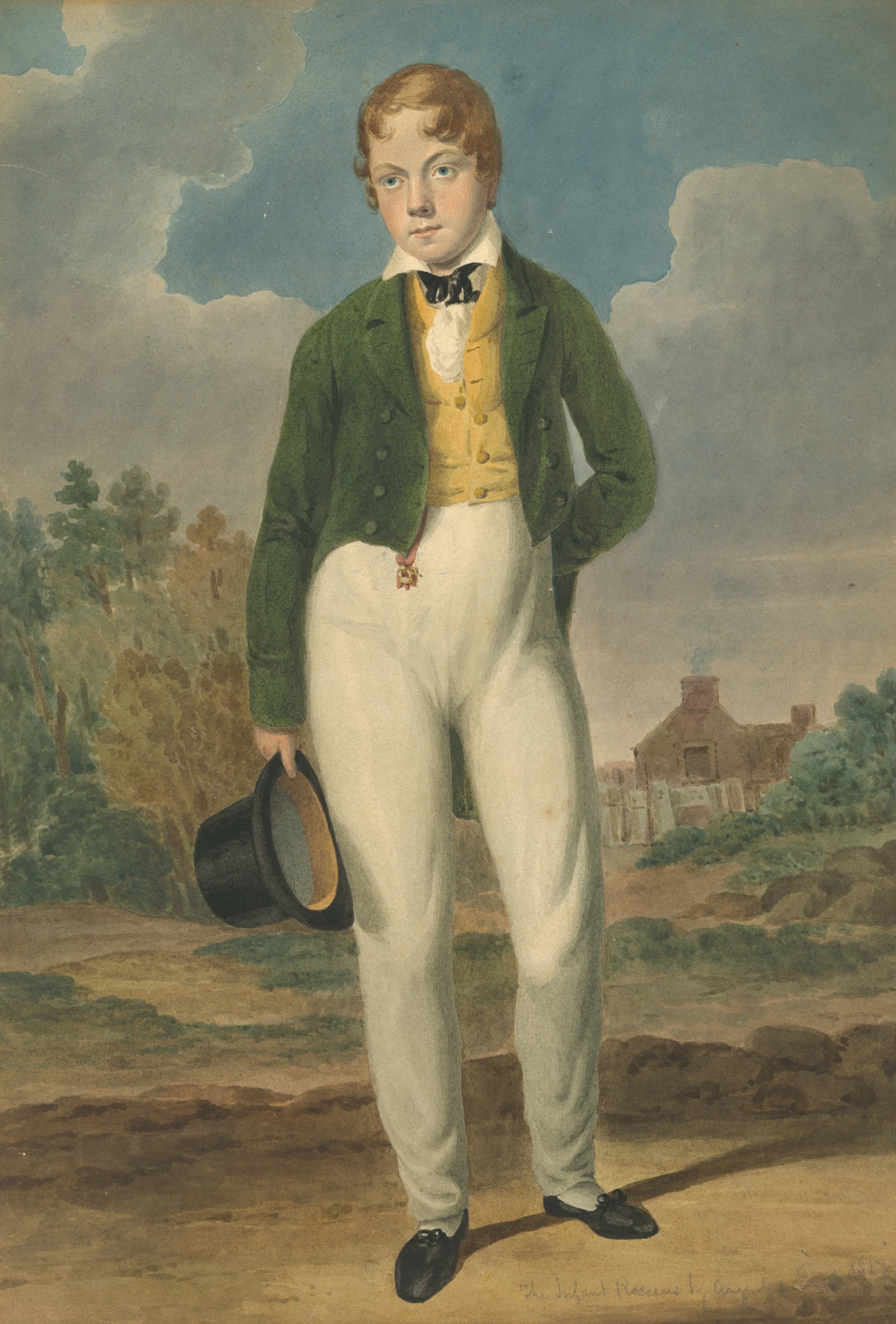The Early Earle

A seminar about the little known early work of English artist August Earle (1793-1838)
Augustus Earle, The Infant Roscius, (1817), watercolour on paper (41.9 x 29.2cm), National Portrait Gallery, Smithsonian Institution; partial gift of William Vareika.
The English artist Augustus Earle (1793-1838) is perhaps best known as ‘The Travelling Artist”, his reputation relying upon his exceptional travels to six continents in the early part of the nineteenth century. This title was utilised by Jocelyn Hackforth-Jones when presenting a wide-ranging exhibition of Earle’s work at the National Library of Australia in 1980.
In each destination visited, Earle established himself professionally and used whatever medium was to hand to support himself through his artistic ability. As a result, his work is scattered around the globe and scholarship since the National Library exhibition has concentrated on particular themes or geographic connections in his work. Little is known, however, of his early years and, in particular, the two years he spent in North America. In this paper this time will be examined to interrogate what influence, if any, his North American experience had on his development as an artist.
Part of the Art History Seminar Series, convened by Mary Roberts and presented by the discipline of art history at the University of Sydney, with support from the Power Institute.

People
Jane Garling
Jane Garling is currently undertaking research into the life and work of Augustus Earle as part of a Doctor of Philosophy under the supervision of Dr Anita Callaway. She was drawn to this artist during her research into the life and work of Frederick Garling, a student of Earle in Sydney in the 1820s.
